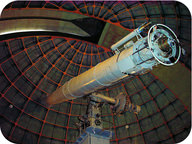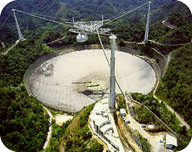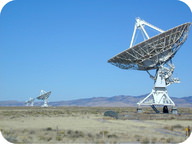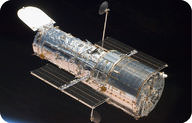2.13: Telescopes
- Page ID
- 5334
\( \newcommand{\vecs}[1]{\overset { \scriptstyle \rightharpoonup} {\mathbf{#1}} } \)
\( \newcommand{\vecd}[1]{\overset{-\!-\!\rightharpoonup}{\vphantom{a}\smash {#1}}} \)
\( \newcommand{\dsum}{\displaystyle\sum\limits} \)
\( \newcommand{\dint}{\displaystyle\int\limits} \)
\( \newcommand{\dlim}{\displaystyle\lim\limits} \)
\( \newcommand{\id}{\mathrm{id}}\) \( \newcommand{\Span}{\mathrm{span}}\)
( \newcommand{\kernel}{\mathrm{null}\,}\) \( \newcommand{\range}{\mathrm{range}\,}\)
\( \newcommand{\RealPart}{\mathrm{Re}}\) \( \newcommand{\ImaginaryPart}{\mathrm{Im}}\)
\( \newcommand{\Argument}{\mathrm{Arg}}\) \( \newcommand{\norm}[1]{\| #1 \|}\)
\( \newcommand{\inner}[2]{\langle #1, #2 \rangle}\)
\( \newcommand{\Span}{\mathrm{span}}\)
\( \newcommand{\id}{\mathrm{id}}\)
\( \newcommand{\Span}{\mathrm{span}}\)
\( \newcommand{\kernel}{\mathrm{null}\,}\)
\( \newcommand{\range}{\mathrm{range}\,}\)
\( \newcommand{\RealPart}{\mathrm{Re}}\)
\( \newcommand{\ImaginaryPart}{\mathrm{Im}}\)
\( \newcommand{\Argument}{\mathrm{Arg}}\)
\( \newcommand{\norm}[1]{\| #1 \|}\)
\( \newcommand{\inner}[2]{\langle #1, #2 \rangle}\)
\( \newcommand{\Span}{\mathrm{span}}\) \( \newcommand{\AA}{\unicode[.8,0]{x212B}}\)
\( \newcommand{\vectorA}[1]{\vec{#1}} % arrow\)
\( \newcommand{\vectorAt}[1]{\vec{\text{#1}}} % arrow\)
\( \newcommand{\vectorB}[1]{\overset { \scriptstyle \rightharpoonup} {\mathbf{#1}} } \)
\( \newcommand{\vectorC}[1]{\textbf{#1}} \)
\( \newcommand{\vectorD}[1]{\overrightarrow{#1}} \)
\( \newcommand{\vectorDt}[1]{\overrightarrow{\text{#1}}} \)
\( \newcommand{\vectE}[1]{\overset{-\!-\!\rightharpoonup}{\vphantom{a}\smash{\mathbf {#1}}}} \)
\( \newcommand{\vecs}[1]{\overset { \scriptstyle \rightharpoonup} {\mathbf{#1}} } \)
\( \newcommand{\vecd}[1]{\overset{-\!-\!\rightharpoonup}{\vphantom{a}\smash {#1}}} \)
\(\newcommand{\avec}{\mathbf a}\) \(\newcommand{\bvec}{\mathbf b}\) \(\newcommand{\cvec}{\mathbf c}\) \(\newcommand{\dvec}{\mathbf d}\) \(\newcommand{\dtil}{\widetilde{\mathbf d}}\) \(\newcommand{\evec}{\mathbf e}\) \(\newcommand{\fvec}{\mathbf f}\) \(\newcommand{\nvec}{\mathbf n}\) \(\newcommand{\pvec}{\mathbf p}\) \(\newcommand{\qvec}{\mathbf q}\) \(\newcommand{\svec}{\mathbf s}\) \(\newcommand{\tvec}{\mathbf t}\) \(\newcommand{\uvec}{\mathbf u}\) \(\newcommand{\vvec}{\mathbf v}\) \(\newcommand{\wvec}{\mathbf w}\) \(\newcommand{\xvec}{\mathbf x}\) \(\newcommand{\yvec}{\mathbf y}\) \(\newcommand{\zvec}{\mathbf z}\) \(\newcommand{\rvec}{\mathbf r}\) \(\newcommand{\mvec}{\mathbf m}\) \(\newcommand{\zerovec}{\mathbf 0}\) \(\newcommand{\onevec}{\mathbf 1}\) \(\newcommand{\real}{\mathbb R}\) \(\newcommand{\twovec}[2]{\left[\begin{array}{r}#1 \\ #2 \end{array}\right]}\) \(\newcommand{\ctwovec}[2]{\left[\begin{array}{c}#1 \\ #2 \end{array}\right]}\) \(\newcommand{\threevec}[3]{\left[\begin{array}{r}#1 \\ #2 \\ #3 \end{array}\right]}\) \(\newcommand{\cthreevec}[3]{\left[\begin{array}{c}#1 \\ #2 \\ #3 \end{array}\right]}\) \(\newcommand{\fourvec}[4]{\left[\begin{array}{r}#1 \\ #2 \\ #3 \\ #4 \end{array}\right]}\) \(\newcommand{\cfourvec}[4]{\left[\begin{array}{c}#1 \\ #2 \\ #3 \\ #4 \end{array}\right]}\) \(\newcommand{\fivevec}[5]{\left[\begin{array}{r}#1 \\ #2 \\ #3 \\ #4 \\ #5 \\ \end{array}\right]}\) \(\newcommand{\cfivevec}[5]{\left[\begin{array}{c}#1 \\ #2 \\ #3 \\ #4 \\ #5 \\ \end{array}\right]}\) \(\newcommand{\mattwo}[4]{\left[\begin{array}{rr}#1 \amp #2 \\ #3 \amp #4 \\ \end{array}\right]}\) \(\newcommand{\laspan}[1]{\text{Span}\{#1\}}\) \(\newcommand{\bcal}{\cal B}\) \(\newcommand{\ccal}{\cal C}\) \(\newcommand{\scal}{\cal S}\) \(\newcommand{\wcal}{\cal W}\) \(\newcommand{\ecal}{\cal E}\) \(\newcommand{\coords}[2]{\left\{#1\right\}_{#2}}\) \(\newcommand{\gray}[1]{\color{gray}{#1}}\) \(\newcommand{\lgray}[1]{\color{lightgray}{#1}}\) \(\newcommand{\rank}{\operatorname{rank}}\) \(\newcommand{\row}{\text{Row}}\) \(\newcommand{\col}{\text{Col}}\) \(\renewcommand{\row}{\text{Row}}\) \(\newcommand{\nul}{\text{Nul}}\) \(\newcommand{\var}{\text{Var}}\) \(\newcommand{\corr}{\text{corr}}\) \(\newcommand{\len}[1]{\left|#1\right|}\) \(\newcommand{\bbar}{\overline{\bvec}}\) \(\newcommand{\bhat}{\widehat{\bvec}}\) \(\newcommand{\bperp}{\bvec^\perp}\) \(\newcommand{\xhat}{\widehat{\xvec}}\) \(\newcommand{\vhat}{\widehat{\vvec}}\) \(\newcommand{\uhat}{\widehat{\uvec}}\) \(\newcommand{\what}{\widehat{\wvec}}\) \(\newcommand{\Sighat}{\widehat{\Sigma}}\) \(\newcommand{\lt}{<}\) \(\newcommand{\gt}{>}\) \(\newcommand{\amp}{&}\) \(\definecolor{fillinmathshade}{gray}{0.9}\)What would Galileo think of the things we can see through a telescope?
Galileo's telescopes could see about as much as a regular pair of binoculars today. Galileo could see four moons of Jupiter. This was four more than could be seen with the naked eye. But we now know that there are 69 moons. Galileo would be astonished to see all of Jupiter's moons. And imagine what he would think of the galaxies!
Types of Telescopes
Humans have been making and using magnifying lenses for thousands of years. The term "telescope" was coined by the Italian scientist and mathematician Galileo Galilei (1564–1642). Galileo built the first telescope in 1608. His telescope used two lenses to make distant objects appear both nearer and larger. He subsequently made many improvements to telescope design.
Optical Telescopes
Telescopes that use lenses to bend light are called refracting telescopes, or refractors (Figure below). The earliest telescopes were all refractors. Many amateur astronomers still use refractors today. Refractors are good for viewing details within our solar system. Craters on the surface of Earth’s Moon or the rings around Saturn are two such details.
Refracting telescopes can be very large.
Around 1670, Sir Isaac Newton built a different kind of telescope. Newton's telescope used curved mirrors instead of lenses to focus light. This type of telescope is called a reflecting telescope, or reflector.
It’s much easier to precisely make mirrors than to precisely make glass lenses. Mirrors are also much lighter than heavy glass lenses. For these two reasons, mirrors can be made larger than lenses. This is important because a reflecting telescope can be made much larger. Larger telescopes can collect more light. This means that they can study dimmer or more distant objects. The largest optical telescopes in the world today are reflectors. Telescopes can also be made to use both lenses and mirrors.
Radio Telescopes
Radio telescopes collect radio waves. These telescopes are even larger telescopes than reflectors. Radio telescopes look a lot like satellite dishes. In fact, both are designed to collect and focus radio waves or microwaves from space.
The largest single radio telescope in the world is at the Arecibo Observatory in Puerto Rico (Figure below). This telescope is located in a natural hole in the ground. This telescope would collapse under its own weight if it were not supported by the ground. There is a big disadvantage to this design. What do you think it is? The telescope can observe only the part of the sky that happens to be overhead at a given time.
The radio telescope at the Arecibo Observatory in Puerto Rico.
A group of radio telescopes can be linked together with a computer. The telescopes observe the same object. The computer then combines the data from each telescope. This makes the group function like one single telescope. An example is pictured below (Figure below).
The Very Large Array in New Mexico consists of 27 radio telescopes.
Space Telescopes
Telescopes on Earth all have one big problem: incoming light must pass through the atmosphere. This blocks some wavelengths of radiation. Also, motion in the atmosphere distorts light. You see this when you see stars twinkling in the night sky. Many observatories are built on high mountains. There is less air above the telescope, so there is less interference from the atmosphere. Space telescopes avoid problems from the atmosphere completely since they orbit outside the atmosphere.
The Hubble Space Telescope (Figure below) is the best known space telescope. Hubble began operations in 1994. Since then, it has provided huge amounts of data. The telescope has helped astronomers answer many of the biggest questions in astronomy.
The Hubble Space Telescope has opened up the Universe to human observation.
The National Aeronautics and Space Administration (NASA) has placed three other major space telescopes in orbit. Each uses a different part of the electromagnetic spectrum. The James Webb Space Telescope will launch in 2020. The telescope will replace the aging Hubble.
Stars in the star cluster appear as points of light. Observations like these must be made with a space telescope.
Summary
- Refracting and reflecting telescopes are optical telescopes that use lenses to gather light.
- Radio telescopes collect radio waves and are sometimes used in large arrays.
- Space telescopes can see much more than Earth-bound telescopes, since the atmosphere doesn’t affect their information.
Review
- What type of telescope was the first to be developed? Why was it the first?
- Why are most telescopes refracting telescopes?
- Why do scientists need space telescopes?
Explore More
Use this resource to answer the questions that follow.
- Where were telescopes developed?
- What did Galileo do for the telescope?
- What was the old belief about the Moon and other celestial bodies?
- List Galileo's discoveries with the telescope.
- Explain Galileo's conflict with the Roman Catholic Church.







